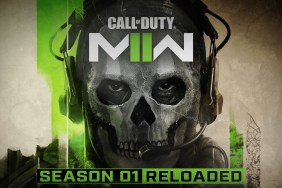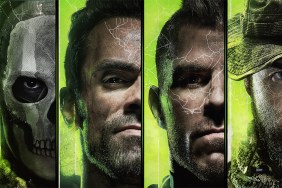Red River, Red River, Send Some Monkeys Right Over.
We all know the saying about monkeys, typewriters, and Shakespeare. And it’s undeniably true that, given world enough and time, any flawed game could be made perfect. Well, almost any game.
[image1]But in the case of Operation Flashpoint: Red River, there are so many small muzzle flashes of brilliance that it’s hard not to think about what this game might have been. It might have been something fresh and edgy in an otherwise stale genre. It might have been a surprisingly frank and honest modern military shooter. It might have been one of the best co-op experiences available. It might have been one of the most ambitious and open-ended FPS games on the market.
Unfortunately as it now stands, every big promise in Red River is offset by an equally large disappointment. For example, environments are open, but your movement within those environments is restricted by a steady stream of checkpoints. Red River emphasizes slow and methodical gameplay, but it gets dragged down by even more slowly paced cinematic sequences. The game aims for realism, but the visuals are distractingly ugly. Cooperative play is a treat, but there’s too much time spent doing nothing. And so on.
Set in a fictional near-future conflict amidst a real historical backdrop, the campaign puts players into a complex political setting that easily surpasses the storyline of most other military shooters. Put simply, Tajikistan is the home of a terrorist group that incites a war between the US and China. While this might sound familiar to those who’ve played Modern Warfare 2, Codemasters pulls it off much more deftly than Infinity Ward ever could. It’s the little touches and nuances that make it work; it’s all about the small battles that fit into the larger conflict, about how your small squad plays a vital tactical role in its own small corner of the conflict.
The pre-rendered movies that introduce each level are top-notch in terms of voice acting, writing, and visuals. Story issues set in, however, once on the ground. Much of the in-level exposition is relayed by a foul-mouthed and long-winded commander, utterly breaking the tension and sense of urgency while you sit locked in place, forced to listen to an idiot drone on and on for ten minutes about FOBs, IEDs, the ETIM, and the PLA. (Oh, STFU.)
[image2]Since so much of the game is already spent walking slowly and carefully in silence, the slow exposition sections bring the pacing of the game to a screeching halt. The sequences offer nothing to you strategically; they’re simply a form of really sloppy, boring, and unnecessary exposition.
Once past the (excellent) pre-rendered cinematics and past the (awful) in-game exposition sequences, the fighting starts. The radial squad command menu and co-op gunplay are outstanding, but they really deserve a better package than this. Enemy AI is scripted, Call of Duty-style, so there isn’t much in the way of replay value. And if you’re playing solo, your squad AI is unpredictable unless you constantly stay on top of them with your squad commands. Telling them to “follow” over and over again every few minutes gets old quickly.
However, it’s in Red River’s overall visual presentation that it suffers most. For a game that puts so much emphasis on spotting enemies and searching carefully through compounds and villages, visual issues affect it more than they would other games.
Enemies are often very difficult to see. I know this game is pushing for realism, but there’s nothing particularly realistic about a big gray blob shooting at me from 50 feet away. Textures and objects have awful pop-in, and enemies themselves will pop into existence from out of the blue from time to time. There are many other smaller graphical glitches, which taken alone aren’t that bad, but added up, they seriously interfere with the overall experience.
[image3]Since Codemasters built this around the four-player cooperative experience, there is no competitive multiplayer—not even in the form of squad versus squad combat. Single-player feels cold and dull, no thanks to the overlong exposition-heavy jeep rides and long, eventless runs up empty hillsides. While cooperative play helps fill in the gaps, it doesn’t fix the glitches or scripted enemy AI.
The idea of an open-ended, multi-squad, strategic, cooperative shooter is incredible, and during those short bursts when Red River comes together—especially when playing with friends—there are few games like it. But there are so many issues, both large and small, that you’ll have to overlook a lot of flaws in order to enjoy it. If only I could stick the disc back in the oven for a little while longer, because Operation Flashpoint: Red River is clearly not finished cooking.
-
Impressive realism
-
Awful visuals
-
Great backstory
-
Terrible in-game expositoin
-
Strategic shooter
-
Scripted enemies
-
Fun co-op play
-
Not fun replay











